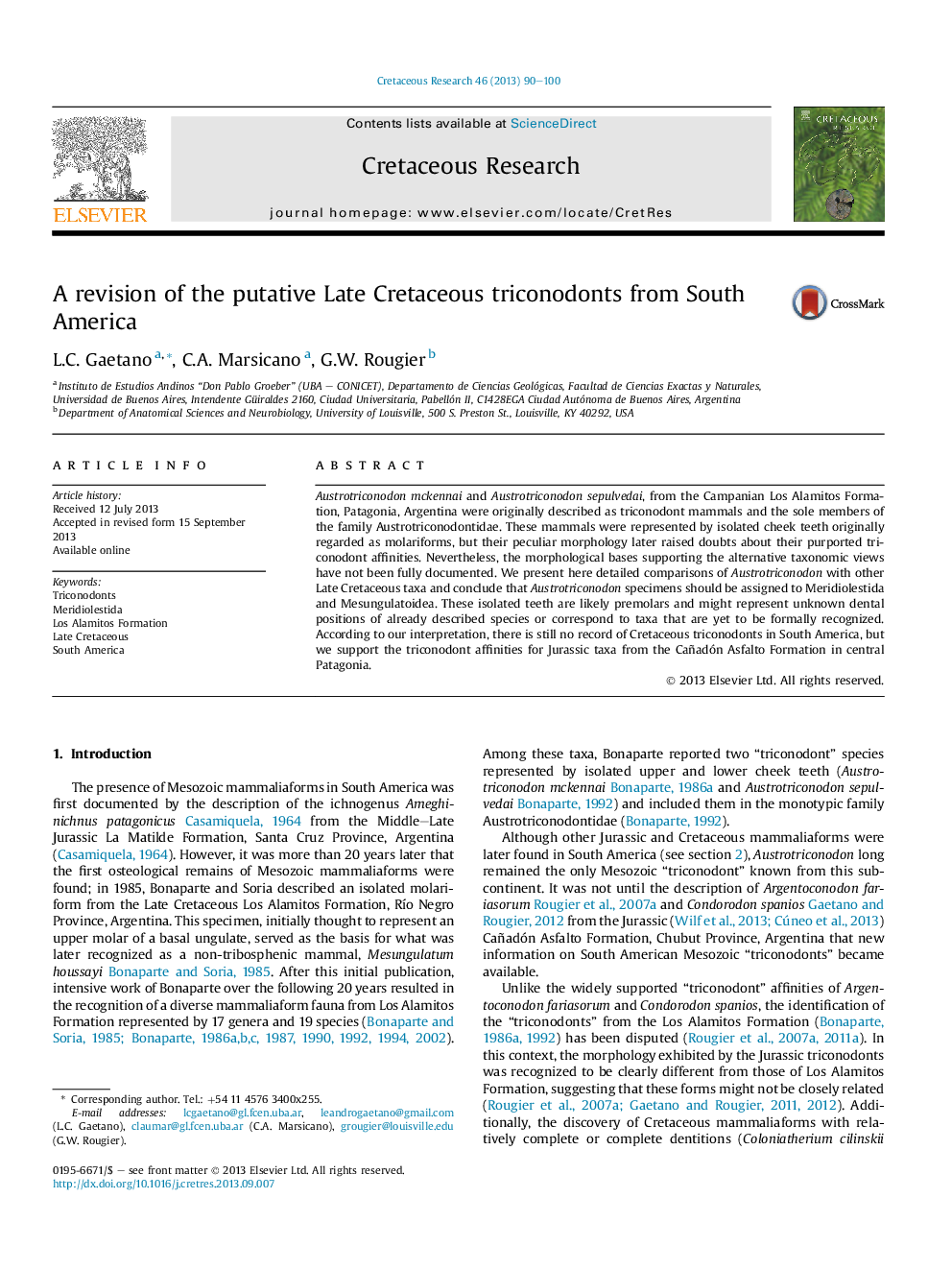| Article ID | Journal | Published Year | Pages | File Type |
|---|---|---|---|---|
| 6448310 | Cretaceous Research | 2013 | 11 Pages |
Abstract
Austrotriconodon mckennai and Austrotriconodon sepulvedai, from the Campanian Los Alamitos Formation, Patagonia, Argentina were originally described as triconodont mammals and the sole members of the family Austrotriconodontidae. These mammals were represented by isolated cheek teeth originally regarded as molariforms, but their peculiar morphology later raised doubts about their purported triconodont affinities. Nevertheless, the morphological bases supporting the alternative taxonomic views have not been fully documented. We present here detailed comparisons of Austrotriconodon with other Late Cretaceous taxa and conclude that Austrotriconodon specimens should be assigned to Meridiolestida and Mesungulatoidea. These isolated teeth are likely premolars and might represent unknown dental positions of already described species or correspond to taxa that are yet to be formally recognized. According to our interpretation, there is still no record of Cretaceous triconodonts in South America, but we support the triconodont affinities for Jurassic taxa from the Cañadón Asfalto Formation in central Patagonia.
Keywords
Related Topics
Physical Sciences and Engineering
Earth and Planetary Sciences
Palaeontology
Authors
L.C. Gaetano, C.A. Marsicano, G.W. Rougier,
